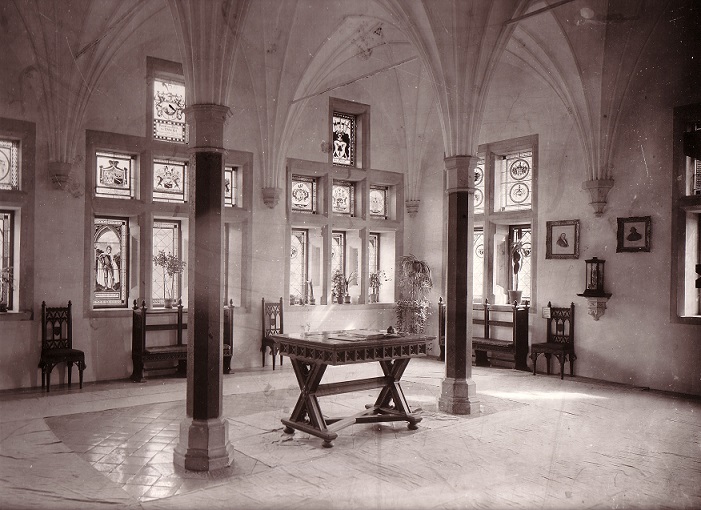Provenance: Gdańsk (?), Królewiec (?), Elbląg (?)
Workshop: unknown
Amber product: wood, amber, ivory; measurements: 39.5 cm
Signatures, inscriptions: none
Pre-war inventory number: unknown
Date of loss of the work: 1945
Current storage location: unknown
Object known only from archival photos. An altar with a wooden structure, covered with amber plates; It had the form of a late-Baroque multi-story altar set in the architectural type, surrounded on three sides by a baluster balustrade, placed on a multistage platform, mounted on four round, flattened legs. In the center of the mensa’s composition, on which there were liturgical paraments (candlesticks, missal, chalice); behind the mensa there was a structure of the attic, the main story of which was an aedicula flanked by Corinthian pilasters, with a cross inside with a veil hanging over the transverse beam. The sides of the altar are decorated with an acanthus motif. Two apostles are sitting at the foot of the pilastersin long robes, busy writing the gospel – from the left Saint Luke and Mark. In the central part of the upper cornice there is an oval amber relief with gold foil on the underside made in the eglomisée technique. At the end of the structure we can see an amber cartouche in the same technique, inscribed in a frame made of acanthus leaves, flanked by two successive figures of the Evangelists, from the left Saint John and Matthew. A figure of the Risen Christ in a gesture of blessing, endowed with a radiant glory, floating on a cloud, at the same time trampling the human image of Satan is placed at the top of the setting.
The altar was donated to the castle in Malbork in 1826 by an unknown commissioner of justice von Duisburg (probably Christian Georg or his son, Karl Ludwig). For some time the object was in the Palace of the Grand Masters, where it stood on a cantilever in the corner hall on the first floor. In 1937 it was published in Alfred Rhode’s work on amber art, which seems to indicate that it remained in the castle collections until the outbreak of World War II. Its later remains unknown.
(compiled by R. Bartkowski)


